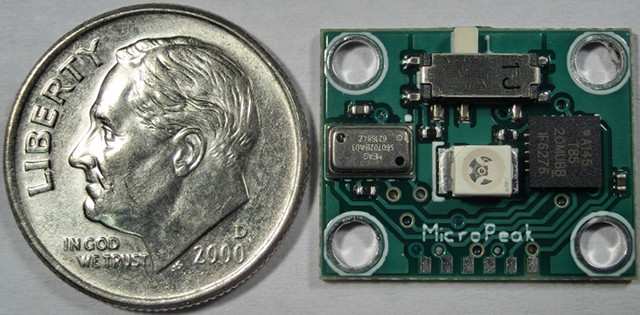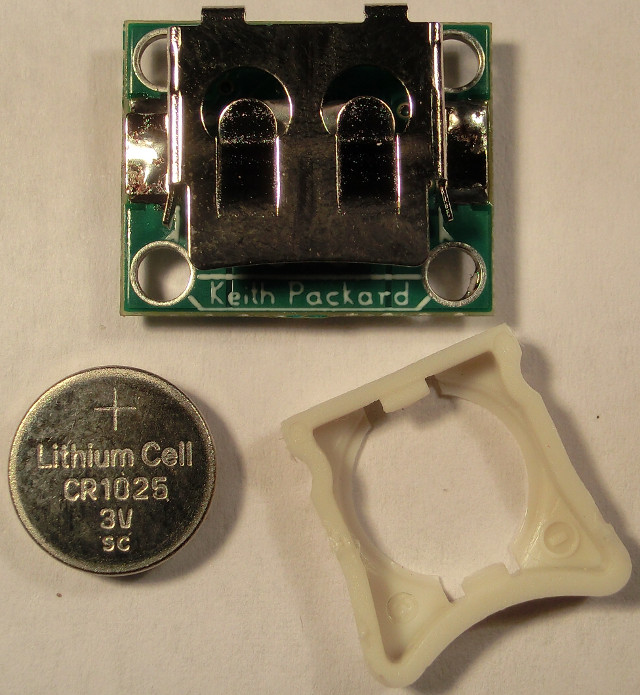MicroPeak — tiny peak-recording altimeter now available
MicroPeak is a miniature peak-recording altimeter. About the same size and weight as a US dime (with battery), MicroPeak offers fabulous accuracy (20cm or 8in at sea level) and wide range (up to 31km or 101k').
Uses the Measurement Specialties MS5607 barometric sensor.
Includes built-in battery holder for easily replaceable CR1025 lithium battery
Compact design is only 18mm x 14mm or 0.7" x 0.56". Weighs 1.9g including the battery.
Low power design lasts for over 40 hours in flight.
Auto-poweroff on landing.
Learn more at the Altus Metrum web site
Buy these at the gag.com web store for Altus Metrum products
The size of the board was predicated with the premise that we needed a battery included to avoid having wiring running between the altimeter and the board, we found some small lithium coin-cell battery holders for the CR1025 battery. These battery holders are rated to hold the battery secure up to 150gs.
We'd already started playing with the Measurement Specialties MS5607 pressure sensor which offers amazing accuracy while using very little power. Taking full-precision measurements every 96ms consumes about .2mA on average. Once on the ground, we stop taking measurements entirely, dropping the power use to around 1µA. It's also pretty small, measuring only 5mm x 3mm.
For a CPU, this little project didn't need much. The 8-bit ATtiny85 comes in a 20qwfn package which is only 4mm x 4mm. When run at full speed (8MHz), it consumes a couple of mA of power. Reduce the clock to a pokey 250kHz and the CPU has enough CPU power to track altitude while consuming less than .2mA on average.
To avoid losing the battery, we wanted to avoid having it removed while the board wasn't in use. So, we added a little power switch to the board. The one we found is good to at least 50g.
Finally, we wanted to find a nice bright LED to show the state of the device and to blink out the final altitude. The OSRAM LO T67K are bright-orange surface-mount LEDs that run happily on 2mA.
We used OSHPark.com to create prototype circuit boards for this project. Because of the small size of the board, each prototype run cost only $2 for three boards. It takes a couple of weeks to get boards, but it's really hard to beat the price.
All of the schematic and circuit board artwork are published under the TAPR Open Hardware License and are available via git.
All of the source code is published under the GPLv2 and is included in the main AltOS source repository.


